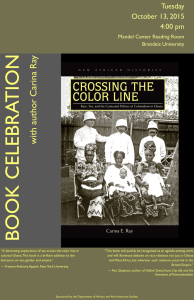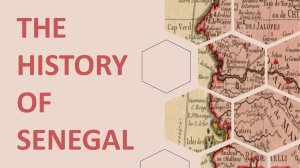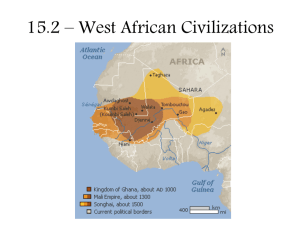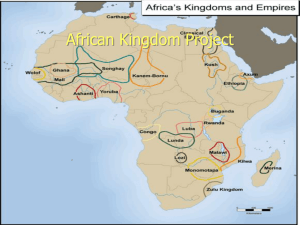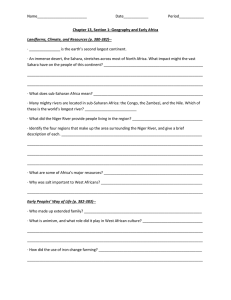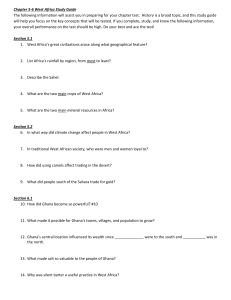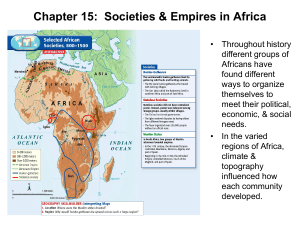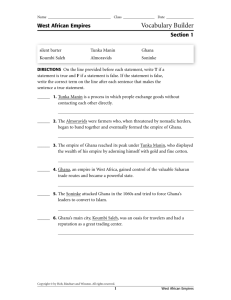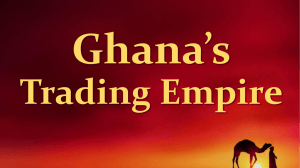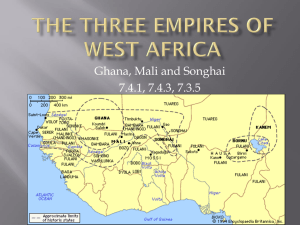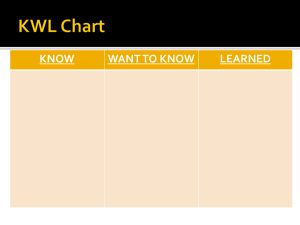500* 600*–699* 800*–899* 900* 1000* 1076 1100–1600
advertisement
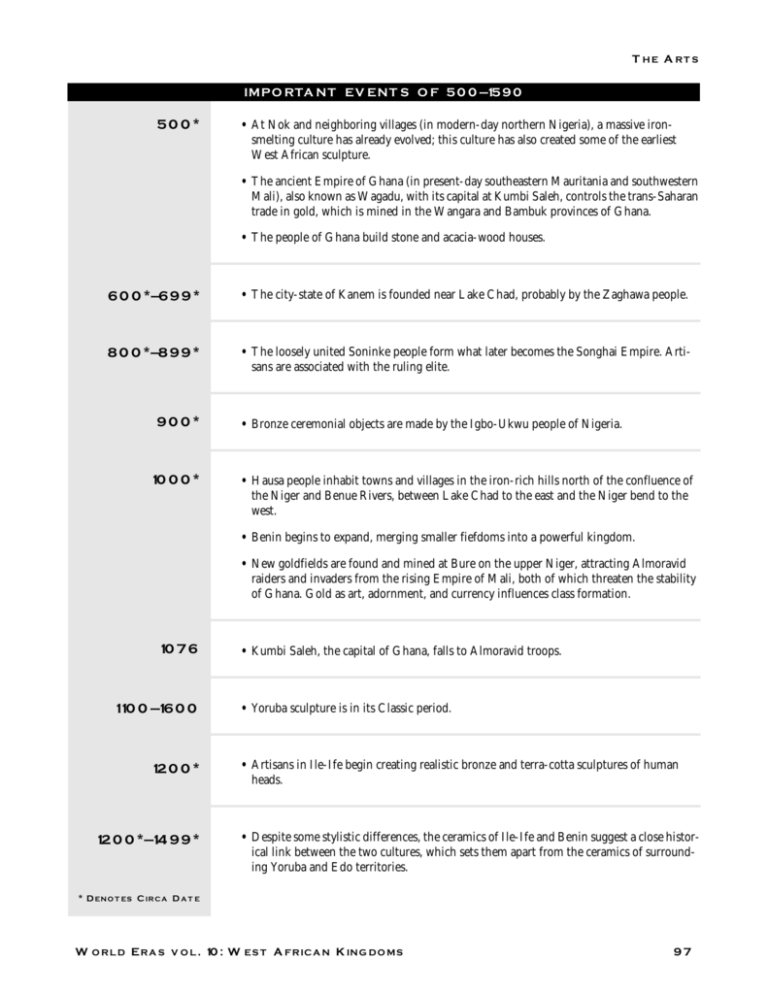
THE ARTS IMPORTANT EVENTS OF 500–1590 500* • At Nok and neighboring villages (in modern-day northern Nigeria), a massive ironsmelting culture has already evolved; this culture has also created some of the earliest West African sculpture. • The ancient Empire of Ghana (in present-day southeastern Mauritania and southwestern Mali), also known as Wagadu, with its capital at Kumbi Saleh, controls the trans-Saharan trade in gold, which is mined in the Wangara and Bambuk provinces of Ghana. • The people of Ghana build stone and acacia-wood houses. 600*–699* • The city-state of Kanem is founded near Lake Chad, probably by the Zaghawa people. 800*–899* • The loosely united Soninke people form what later becomes the Songhai Empire. Artisans are associated with the ruling elite. 900* 1000* • Bronze ceremonial objects are made by the Igbo-Ukwu people of Nigeria. • Hausa people inhabit towns and villages in the iron-rich hills north of the confluence of the Niger and Benue Rivers, between Lake Chad to the east and the Niger bend to the west. • Benin begins to expand, merging smaller fiefdoms into a powerful kingdom. • New goldfields are found and mined at Bure on the upper Niger, attracting Almoravid raiders and invaders from the rising Empire of Mali, both of which threaten the stability of Ghana. Gold as art, adornment, and currency influences class formation. 1076 1100–1600 1200* 1200*–1499* • Kumbi Saleh, the capital of Ghana, falls to Almoravid troops. • Yoruba sculpture is in its Classic period. • Artisans in Ile-Ife begin creating realistic bronze and terra-cotta sculptures of human heads. • Despite some stylistic differences, the ceramics of Ile-Ife and Benin suggest a close historical link between the two cultures, which sets them apart from the ceramics of surrounding Yoruba and Edo territories. * DENOTES CIRCA DATE WORLD ERAS VOL. 10: WEST AFRICAN KINGDOMS 97 THE A RTS IMPORTANT EVENTS OF 500–1590 1240 • Sundiata, ruler of Mali, conquers Ghana and incorporates it into his empire. 1327* • During the reign of Mansa Musa, the Jungereber mosque is built in Timbuktu, the capital of the Empire of Mali and an important trading city. 1400* • Artisans in the Kingdom of Benin begin making high-quality bronze and brass sculptures. 1464–1492 1571–1603 • During the reign of Sunni Ali, Songhai reaches its ascendancy, occupying Timbuktu to secure the flow of trade and exchange of ideas and cultural artifacts through the region. • During his reign Idris Alooma establishes himself as the greatest leader of the Kanem-Bornu Empire, greatly expanding its territory through a succession of military conquests. * DENOTES CIRCA DATE The Friday Mosque in the Malian trading city of Djenné, built circa 1300 (from Susan Denyer, African Traditional Architecture, 1978) 98 WORLD ERAS VOL. 10: WEST AFRICAN K INGDOMS

